Weekly round-up: 30 Sep - 06 Oct 2015
The last cheeky flick of the previous week’s westerlies kissed the Northern Isles as this week began, with predictable results. Latterly though it was all about the high pressure and the easterlies as the week wore on, with the length of the east coast right in the front line.
After a largely fine and sunny weekend the week concluded with warm and rather humid conditions across much of England on the back of a generally southerly airflow – and some tasty south-easterlies the further one went up the country. For ‘tasty south-easterlies’, in Shetland by the end of the week one could read ‘the autumn’s first really snorty south-easterly storm’. And we all know what that usually means at this time of year...
All of this precedes a genuinely promising forecast for the coming week - for the Northern Isles the easterlies are set to blast in the new week, while out in the Atlantic the remains of Hurricane Joaquin may have something up their sleeve for the rest of the country – though at the time of writing quite how this plays out against a building ridge of high pressure is anyone’s guess. Either Scilly or Shetland may get the fallout – or indeed, both might, as might all points in between... or none! But what seems certain is that as the week progresses we’re in for more lovely easterlies.
That’s all getting rather ahead of ourselves though. Let’s take a jaunt back through the last week...
Granted there are rarer passerines that the east can throw at us, and some of them even turn up outside of God’s own birding playground (aka Shetland), but if there’s one bird and one location that takes all of the promise, the joy, the adrenalin and the intoxicating headrush that’s autumn birding in the UK, wraps it up into one enticing, irresistible bundle and serves it up on a plate, it’s a male Siberian Thrush on Fair Isle.
And so it was on the sunny morning of the 5th when news broke of just that killer combo in the north. Always a heart-stopping bird, this was ample reward for those who’d chosen to base themselves at the world famous Fair Isle Bird Observatory in the first week of October – and rather a sickener for those crews who’d just left Shetland on the cusp of the first really snorty south-easterly storm of the autumn. What else would come in on this bird’s heels? You’ll have to watch this space...
As Assistant Warden at Fair Isle Bird Observatory during spring and autumn migration part of my duties is to count all migrant bird species in certain sections of the Island each day, the Island is divided into three sections; North, South East and South West split between the three wardens and done on a clockwise rotational rota.
Whilst covering South West census on 5th October the weather was a very promising strong SE breeze. Having already checked Setter Croft and Pund picking up a few migrants en route i.e. Siberian Chiffchaff, Yellow-browed Warbler, Blackcap and several Goldcrest plus small groups of Redwings and Geese overhead. With good numbers of visiting birders checking the Croft gardens I decided to check the hopefully sheltered west cliffs, having climbed Hill Dyke and checked Gunnawark Geo picking up further Goldcrests, two Yellow-browed Warblers, small groups of Redwings and a couple of Blackbirds. On passing the tip of Hoini I reached a promising grassy slope down to the sea when three Song Thrush flew out just below me calling then a really dark Thrush the same size as the Song Thrushes flew out just behind them I got my Bins on it immediately to see it then flip sideways on being completely dark blue with this blue stripe right the way up the under wing bordered by gleaming white broad stripes then it disappeared South round the cliff edge. Literally on view for a few seconds but absolutely no doubt it was a 1st winter male Siberian Thrush now the panicked phone calls started as I tried to relocate the bird in the next Geo to the South on arrival I could hear the Song Thrushes calling again only to see the Thrush again disappear over a ridge and towards the very high south cliffs of Hoini. The next period of time was a bit of a blur as all the birders on the Island scoured the west cliffs after approximately half an hour Fred Fearn relocated the bird in Steensi Geo but sadly it just vanished again without any other birders seeing it. Hopefully it is still on the Island and can be re-found once the weather dies down.
Even without the Thrush it was an amazing day with migrants everywhere a real spectacle! Some of my many highlights included in the SW were; 3 Richard's Pipit inc one in off the sea at Hoini flying over the cliffs calling then pitching down quite close, 4 Glossy Ibis, Red-breasted Flycatcher, 653 Redwing with many more across the Island, 15 Yellow-browed Warblers, 2 Siberian Chiffchaffs, 4 Chiffchaff, Willow Warbler, Ring Ouzel, 953 Barnacle Geese on the Skaden including a leucistic white bird, two very striking possible Baltic Gull candidates on rocks off South Light before flying east, 20 Goldcrest, 5 Brambling, 6 Blackcap, 10 Snow Bunting, Hen Harrier plus many more common migrants.
Including the bird at Scousburgh on the Shetland mainland last autumn this latest record takes the British and Irish account to a nice round dozen individuals. It may not be the rarest of Sibes these days, but lest we forget it’s still an absolute mega bird.
(And one that I have the unenviable record of having dipped precisely a third of all previous available birds, having missed not only the first-winter female at Scousburgh in 2014 but also the males on St.Agnes (Scilly) in 1999, Foula in 2007 and Fair Isle in 2008 – the latter a double-whammy as I managed to not see the Brown Flycatcher as well that day).
It was probably for the best that I couldn’t get onto Fair Isle this week. It wouldn’t have ended well...

Shetland had already served up previous thrush loveliness by the time the Siberian boy arrived on Fair Isle, with one of those east-meets-west situations so beloved of autumn island birders – a smart Swainson’s Thrush had been unearthed at the opposite end of the archipelago the previous day. Given the likely prospects of any North American passerine unfortunate to find itself on the wrong side of the Atlantic at this time of year, it was perhaps ironic that this individual found itself hanging out at the Final Checkout Café on Unst...
In what’s already been a superb year nationwide for Catharus thrushes – and with the Grey-cheeked Thrush elsewhere in Shetland only the week before – this almost felt expected somehow. Shetland’s already enjoyed one Swainson’s this year, the individual found on Fetlar in June, so including that one this latest bird takes the islands’ tally to 13.
That’s a smidgen ahead of Grey-cheeked Thrush, with last week’s bird being Shetland’s 11th individual. What those bald statistics don’t quite reveal is the gathering pace of these records – all but two of the Swainson’s have been after 2000, as have all but three of the Grey-cheeks. Chuck in three Veery post-2000 as well, and you’ve got a whole lot of subtle Catharus loveliness going on in the far north.
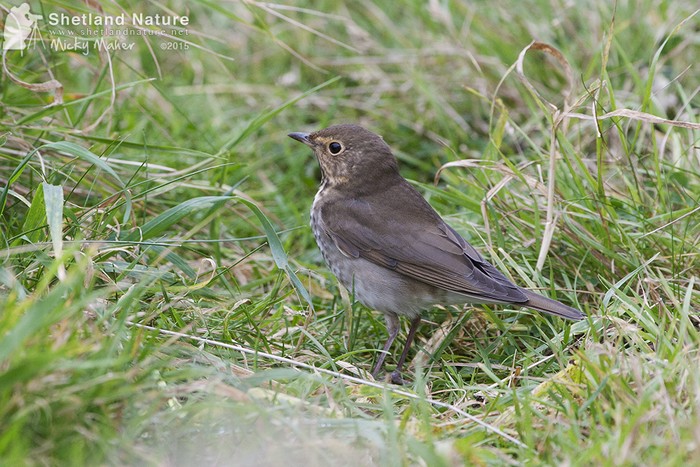
In fact there’s not been a blank year since 2008 – that’s seven consecutive years Shetland’s enjoyed at least one of those three species of an autumn. The last autumn Hermit Thrush in Shetland was back in 1995, so that’s long overdue a showing...
Whether this upsurge in recent records represents a genuine shift in where North American passerines are making landfall is moot – there are certainly far more birders in Shetland of an autumn these days, which suggests that with increased coverage more rarities of all kinds should be found. What seems certain is that Shetland in autumn these days represents a good bet for anyone hoping to catch up with a North American thrush away from a Scilly bulb field.
Lest we get all overcome by just how flipping great Shetland can be of a first week of October, on 3rd Spurn (East Yorkshire) served up a tidy reminder that the sticky-out bits of the English east coast can still come over all best-days-with-British-birds on us – swept in on a tide of Yellow-browed Warblers were three rather rarer kettles of fish altogether.
Topping the bill on Spurn on Saturday was the cracking Pied Wheatear found in the early afternoon at Middle Camp – showing well through the afternoon it’d gone by the following day. Yorkshire’s 8th record of the species, Spurn lays claim to exactly half of those with this latest bird, the last one being there in November 2011.
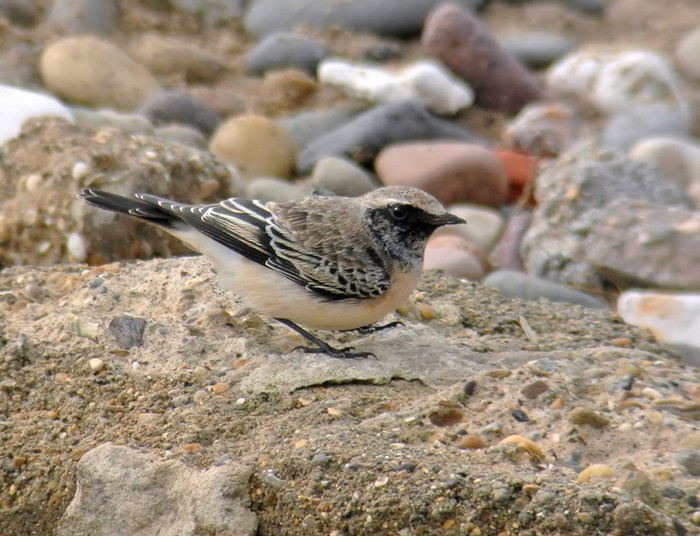
Further distractions on Spurn were to be had in the form of an Olive-backed Pipit found earlier in the morning at Chalk Bank, showing off and on through the day; and a Citrine Wagtail found mid afternoon at Middle Camp, the latter bird at least sticking around until 6th. All in all, not a bad day’s work for the Spurn regulars – now find us a Tengmalm’s Owl and we’ll all be really impressed!
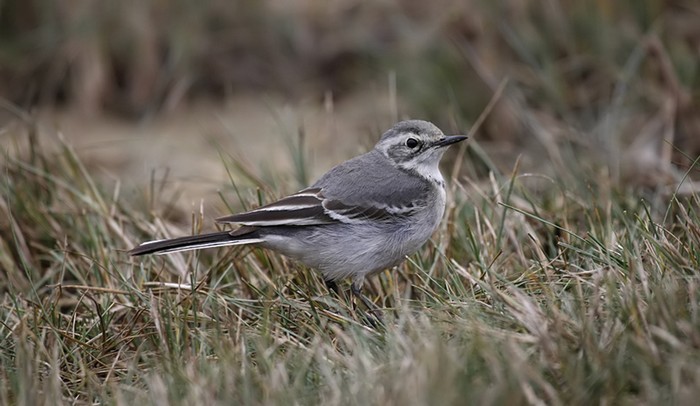
Moving down the east coast, it was Norfolk’s turn on 2nd to remind us that one overlooks this awesome county at one’s peril. We’ve all come a very long way indeed since tentatively getting to grips with the famous Skewjack Pipit in Cornwall in 1990 – with further instructive lessons being learned on the St.Mary’s golf-course on Scilly in 1993.
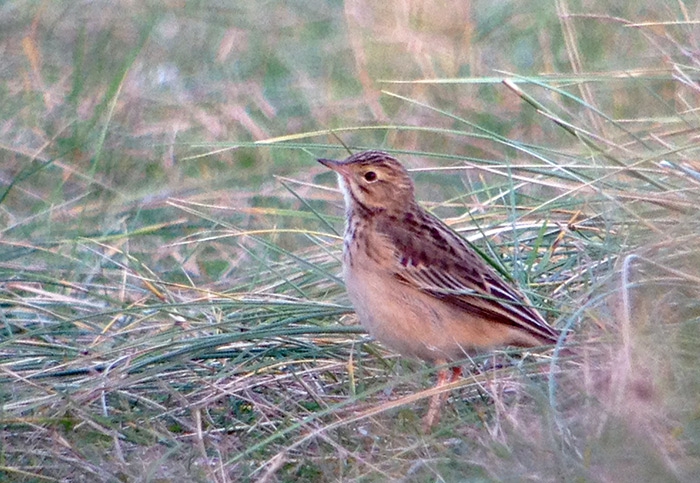
Since taking those baby steps we’ve come along in leaps and bounds with Blyth’s Pipits, with 22 records up to the end of 2013 on the books. That said, it’s been quite a while since Norfolk enjoyed one – the last being in 1999 - so the finders of the county’s third at Stiffkey on 2nd-3rd are to be justly congratulated for a top-class bit of birding.
In what’s already shaping up to be a classic autumn for the increasingly regular Pallid Harrier there was plenty to be going at again this week, not least the unblocking of the juvenile first reported from The Burgh (West Sussex) on September 29th. With no initial sightings on 30th all appeared to be lost where this second for the county was concerned...
Fortunately for southern counties-based birders, the bird was refound in the afternoon of 30th and preceded to show in the area, at times fairly well, throughout the week.

Back in the species’ usual autumnal stronghold one juvenile remained on Unst (Shetland) at Northdale until 2nd. Back on the mainland, a juvenile was in Highland at Tarbat Ness in the afternoon of 4th, while a probable juvenile flew over Hoylake (Cheshire) on 1st – an excellent west coast record and what would be, if confirmed, the first record for the county.
In a week when I ran out of fingers, toes and other bodily multipliers counting up Yellow-browed Warblers it came as something of a relief to that things were blissfully quiet on the seabirds front.
(What’s that? You spent a fruitless few hours staring out to see from a headland trying to see Balearic Shearwaters? Are you mad? It’s October – go kick some bushes!)
Happily it seems most people were as distracted by those warblers as I was – we’ve just a scattering of Balearic Shearwaters to report: one off Cley (Norfolk) on 30th; singles past Walcott (Norfolk) and Sanday (Orkney) on 1st; one past Blakeney Point and Winterton-on-Sea (Norfolk both) on 3rd, with two seen that day at sea in Co.Cork from the RV.Celtic Explorer; in Devon on 4th a single off Hope’s Nose and three off Berry Head, with further singles that day off Portland (Dorset) and Flamborough Head (East Yorkshire). On 5th one was off Skokholm (Pembrokeshire), two were logged from Portland, three from Porthgwarra (Cornwall), while it was to Devon’s ever-reliable Berry Head once again that day for the week’s highest return – 13 birds noted. On 6th single birds were logged off Berry Head and Strumble Head (Pembrokeshire), two passed Portland (Dorset), and eight were off Pendeen (Cornwall) in the afternoon.
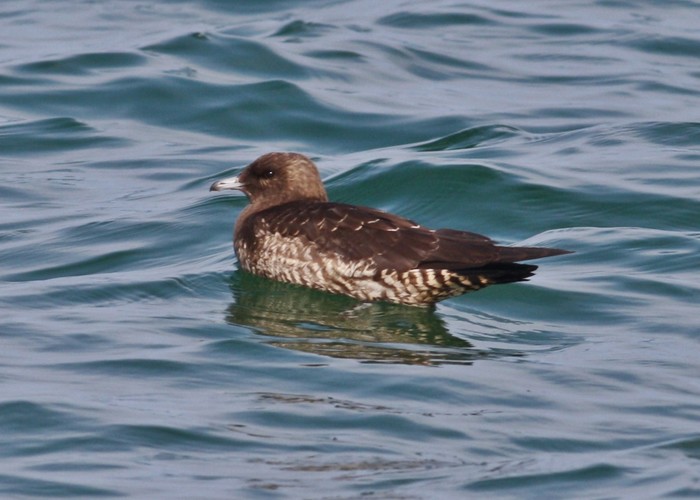
With no large shearwaters to distract us we’re straight into the skuas, with similarly slim pickings. Pomarine Skuas just out-edged their Long-tailed cousins... 11 Poms passed Gibraltar Point (Lincolnshire) on 30th; on 3rd three were seen off Out Skerries (Shetland), with three also noted that day from North Ronaldsay (Orkney) and a single off Fair Isle (Shetland); while on 4th singles were seen off Sumburgh (Shetland), off Staffin Bay (Highland) and from Brownstown Head (Co.Waterford), with two seen from Flamborough Head (East Yorkshire). On 5th one passed Low Newton-by-the-Sea (Northumberland), two were off Chanonry Point (Highland) and three were off Brora (Highland also). On 6th two passed Grutness (Shetland) during the course of the day, with further birds noted in the islands at Weisdale Voe and up on Unst at Skaw. Elsewhere on 6th further individuals were logged off Kilminning (Fife) and Garinish Point (Co.Cork) with three seen from Bardsey Island (Gwynedd).
Single Long-tailed Skuas were logged on 1st off Spurn (East Yorkshire), on 3rd from Filey (North Yorkshire), on 4th off Staffin Bay (Highland) and on 5th from Saline (Fife), with two birds on the latter date off Brora (Highland). On 6th further singletons were seen off Portland (Dorset) and Whitburn Coastal Park (Co.Durham), with two that day from Bardsey Island (Gwynedd).
A Leach’s Petrel was tracked along the Norfolk coast on 3rd, passing Kelling, Salthouse and Cley.
Herald of the waning year was a White-billed Diver on the sea at Hilton of Delnies (Highland) on 4th – the first Scottish bird since the midsummer individual in Shetland in mid June.
Hot on the heels of the island’s first ever Glossy Ibis in May 2014, Fair Isle (Shetland) hosted it’s second record of the species this week – raising the stakes significantly with a small flock of five birds on 2nd-4th. Those small pools in front of the observatory have always looked alluring… Judd Hunt, finder of the first bird last year and back on the island this week, must be wondering what makes him so damned magnetic where long-legged birds like these are concerned…
The week kicked off in Ireland with one in Co.Waterford at Clohernagh on 1st, with one in Co.Cork at Midleton on 2nd and again on 6th. One was again in Somerset at Ham Wall RSPB on 2nd-6th. A further wandering singleton was noted on 4th at Burton Mere Wetlands RSPB (Cheshire) and Martin Mere WWT (Lancashire). On 6th one was again briefly at Wat Tyler CP (Essex).


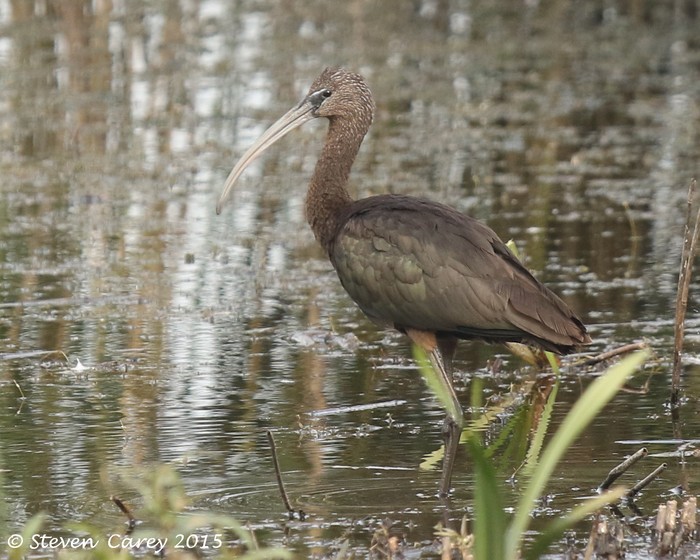
It was also a busy week for Cattle Egrets, with a scattering of birds with a mostly westerly bias to their distribution. Single birds were noted in Glamorgan at Kenfig NNR on September 30th – October 4th, and at Sully Beach on 1st; in Dorset at Abbotsbury on September 30th – October 1st and again on 6th; and in Somerset at Shapwick Heath NNR on 1st, 3rd and 5th-6th. Elsewhere in Somerset four birds were noted over Apex Leisure Park on 1st. Back in Kent one was again logged at Dungeness on 2nd.
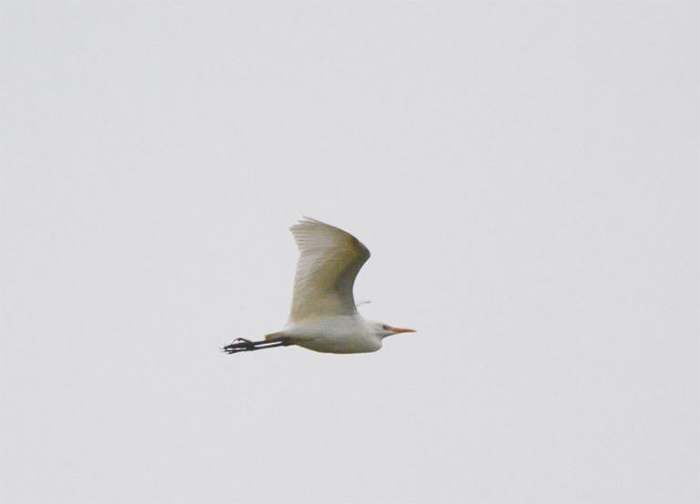
A Purple Heron was seen in Ireland at Lough Beg (Co.Cork) on 1st.

Brownsea Island (Dorset) increased on last week’s tally of 42 Spoonbills with a peak count this week of 47 birds on the lagoon on 3rd-4th. Not a million miles away at Arne RSPB 17 were noted on 1st, with 18 there on 4th. That was as nothing though as on 6th Arne RSPB stole Brownsea’s crown with a new UK record count of Spoonbills - a superb half century score in the afternoon with 53 birds in all counted roosting from the Shipstal Hide. Compared to these hefty counts in the county the three seen on September 30th at Portland and then, latterly, Radipole and Lodmoor RSPBs seemed like small beer.
Mopping up the remainders in chronological order, we find one at Abberton reservoir (Essex) on September 30th – October 4th; three passing Landguard NR (Suffolk) on 30th, with seven past there on 4th; one at Magor (Gwent) on 30th; four at Titchwell RSPB (Norfolk) on September 30th – October 1st; and one at Stithians reservoir (Cornwall) on September 30th – October 1st.
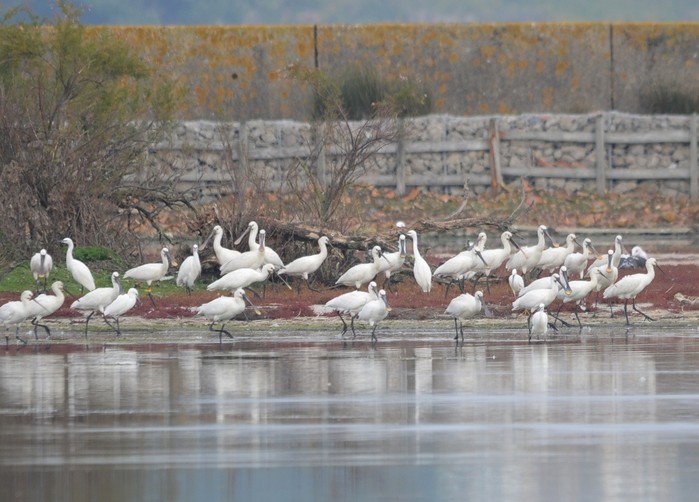
Moving into the new month, further birds were at Rye Harbour NR (East Sussex) on 1st-2nd; at Eyebrook reservoir (Leicestershire) on 1st-5th; and at Holme-next-the-Sea (Norfolk) on 1st. On 2nd five were noted in Norfolk at Brancaster, with one at Church Norton (West Sussex). On 3rd one was again in Co.Kerry at Cromane, with a further bird noted that day in Somerset at Brean Down. On 5th-6th one was down on the Hayle Estuary (Cornwall).

The week’s Common Crane perambulations begin with the settled individual still mooching around Blithfield reservoir (Staffordshire) until 2nd. September’s other offering was in Glamorgan at St.Mellons on 30th. Three were at Burwell Fen (Cambridgeshire) on 1st; two adults were up in Scotland on Montrose Basin (Angus) on 2nd. Two birds were noted on 3rd in Norfolk at Stiffkey, Holkham and Burnham Overy. On 4th two flew south-east over Dalston (Cumbria); and two were seen that evening in Cheshire at Frodsham, being still present there on 5th also.
Two Corncrakes this week, at polar opposite ends of the country – one at Portland (Dorset) on 2nd, and one on Fair Isle (Shetland) on 4th. A Spotted Crake was seen at Burton Mere Wetlands RSPB (Cheshire) on 3rd.
In Devon, on the River Exe, the minima Ridgway’s Cackling Goose remained in the somewhat perplexing company of Dark-bellied Brent Geese there until 6th. Further action from The-Goose-Formerly-Known-As-Canada was to be had up in Angus on 2nd where a Cackling Goose was at Findhorn Bay (Moray). The latter had gone by 4th, but there was some compensation to be found there in the form of a Snow Goose. A further Snow Goose was seen passing over Caerlaverock WWT (Dumfries & Galloway) on 6th.
While Dark-bellied Brent Geese may not be particularly associated as a carrier species for Cacklers, they feel somewhat better where Red-breasted Goose is concerned – make then what you will of the Red-breasted Goose that flew down the east coast with some on 30th passing Landguard NR (Suffolk) in the late morning and then Frinton-on-Sea (Essex) in the early afternoon.
Winter is coming, and with it comes Black Brants - first though, we need to get through the autumn and the hordes of distracting Yellow-browed Warblers - so just a handful of Brants to be had this week – one at Wyke Regis (Dorset) on September 30th; one in Essex at Leigh-on-Sea on 2nd; and one sharing the Exe Estuary with the Cackler and its cohorts on 4th-6th.
The adult drake Ferruginous Duck at Blashford Lakes HWT (Hampshire) popped up again on 3rd – cue the usual winter cat and mouse goings on seeing this handsome lad.
Hertfordshire scored a drake Ring-necked Duck at Wilstone reservoir on 2nd and Sartrop’s End reservoir on 4th-6th.
In Orkney the American Wigeon remained on Westray’s Swartmill Loch until 3rd, while the drake was still at Tacumshin (Co. Wexford) on 2nd.
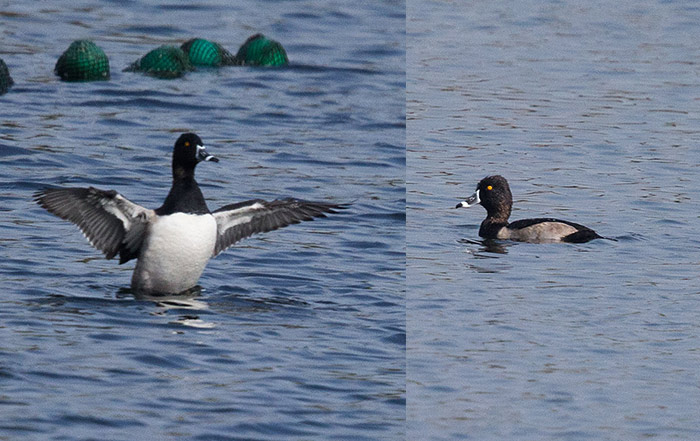
Last week’s drake Surf Scoter remained in Lothian’s Gosford Bay until 4th, while a further drake was at the tradition Llanddulas (Conwy) site on 1st. A female or juvenile drake was in Co.Kerry on 5th at Glenbeigh.
So those were your wildfowl – and I didn’t even have a free-flying domestic Hooded Merganser to put the boot into.
In a busy week for (mostly) passerine headliners I’m bumping some of last week’s stars down into the main body of the Round-Up. So no offence meant, Isle of Wight Greater Yellowlegs, you’re a top shorebird and all that, but needs must when new birds are flying in thick and fast...
Said adult Greater Yellowlegs remained at Whippingham on the River Medina until 6th, while over in Ireland on the Muckross Estuary (Co.Cork) a Lesser Yellowlegs was to be found on 1st-6th.
Norfolk scored with a Marsh Sandpiper on the Cley saltmarshes on 2nd-3rd. While Norfolk has enjoyed a substantial slice of the cake where previous records are concerned (with 19 accepted to the end of 2013), October records are almost hens’ teeth rare – with just three latter-day previous ones on the books all dating from the first week of October in, respectively, Somerset in 1982; the Western Isles in 1994; and Highland in 2000.

Not a million miles away down the Norfolk coast at Titchwell RSPB the Temminck’s Stint remained until September 30th.
Both of last week’s juvenile Semipalmated Sandpipers remained on their chosen quarters this week, at Slimbridge WWT (Gloucestershire) until 5th and on Co>Kerry’s Inny Estuary until 1st respectively.
The Slimbridge Semipalmated Sandpiper trying his best to look like a Spoon-billed Sandpiper! @RareBirdAlertUK pic.twitter.com/SimVWP9s0D
— James Lees (@JamesSLees) October 2, 2015Also hanging around a while longer was the juvenile Baird’s Sandpiper at Hough Bay, on Tiree (Argyll & Bute), present there until 2nd. A White-rumped Sandpiper was at The Gearagh (Co.Cork) on 1st.
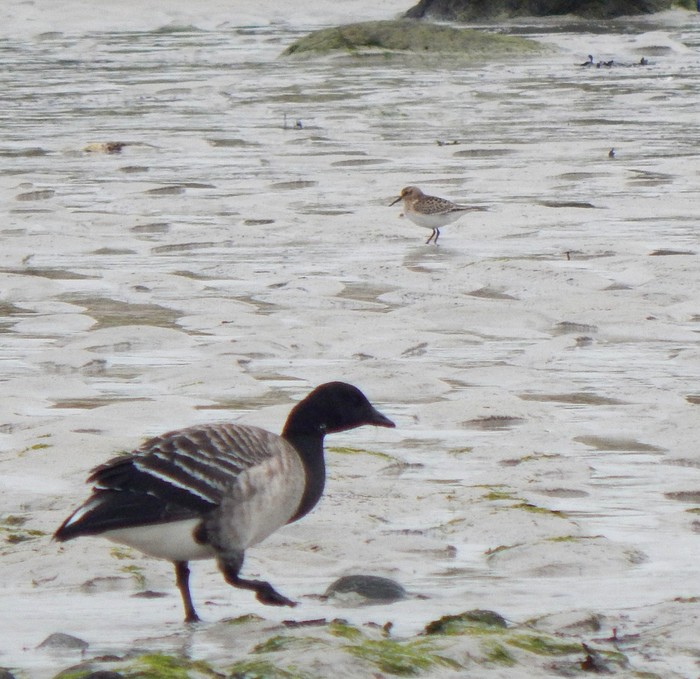
The Hampshire Long-billed Dowitcher remained on Keyhaven and Pennington Marshes until 6th, occasionally even consenting to show itself... Another dowitcher sp. on Sanday (Orkney) on 2nd was considered most likely to be this species also.
Another American lingerer was the Wilson’s Phalarope in Essex which remained there until 3rd. The only Buff-breasted Sandpipers of the week were on North Ronaldsay (Orkney), with one there on 1st rising to a pair of them by 3rd.
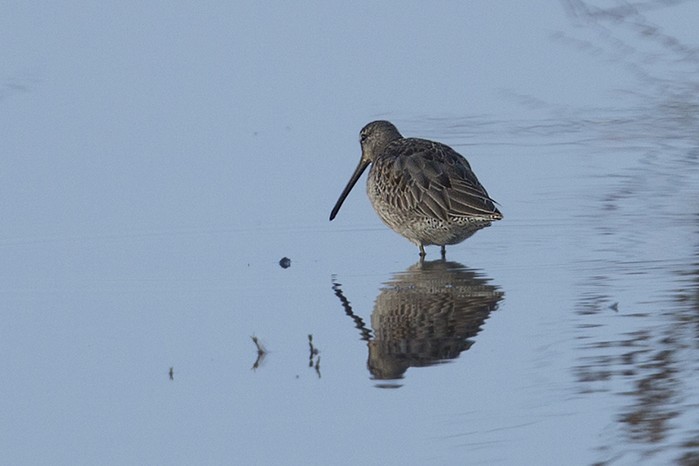
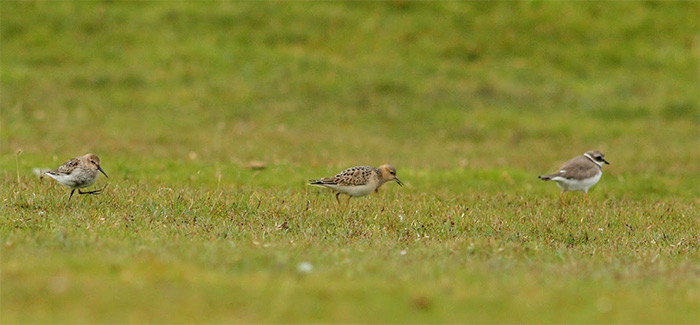
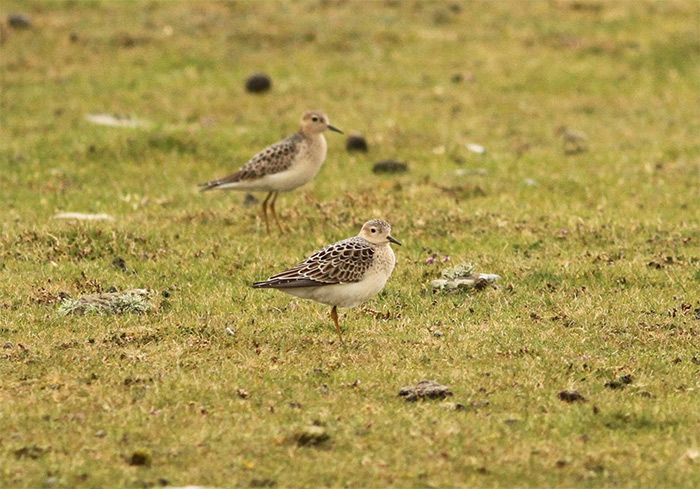
A typically busy early October week was had for American Golden Plovers with almost double figures recorded. September closed with adults at Killough Harbour (Co.Down) and Sanday (Orkney) on 30th; October kicked off with one still at Ballycotton (Co.Cork) on 2nd, and further birds at Anthorn (Cumbria) on 2nd-3rd and on Yell (Shetland) on 2nd-5th. A probable bird was heard calling overhead at Dale (Pembrokeshire) on 3rd, with confirmed birds that day at Inishmore (Co.Galway) and Soap Rock (Cornwall), the latter bird still there on 4th. One imagines there will be one on Scilly any day now...
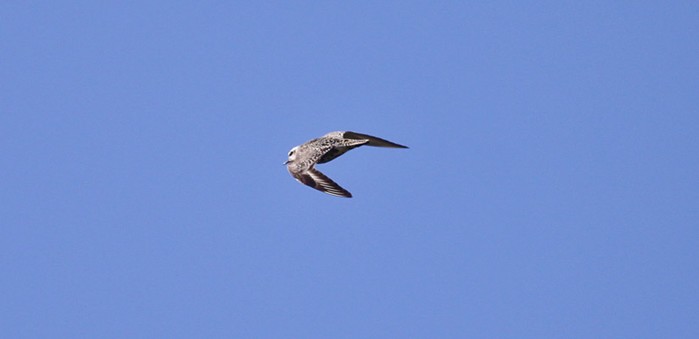
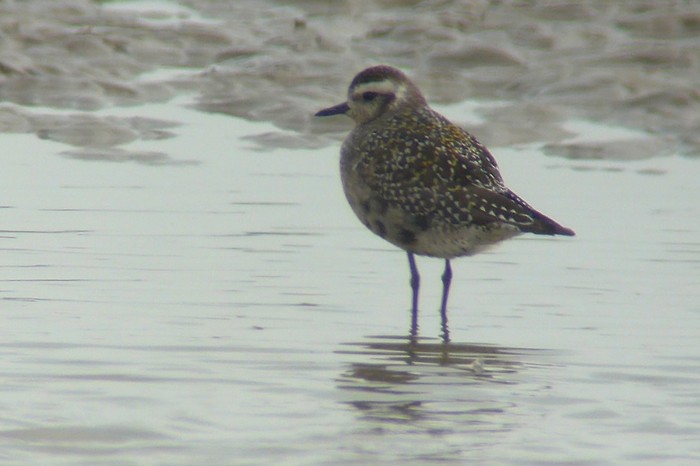
A grand total of just four Pectoral Sandpipers were logged this week, and all of them in England. (Crap at rugby, not bad at Pecs. It’s not all bad then...) All four were familiar faces – on Scilly’s St.Mary’s until 6th, Adwick Washlands RSPB (South Yorkshire) until 4th, Burton Mere Wetlands RSPB (Cheshire) until 4th, and at Dawlish Warren NNR (Devon) again on 2nd. Again, there’s surely some more of these in the post for south-west birders.
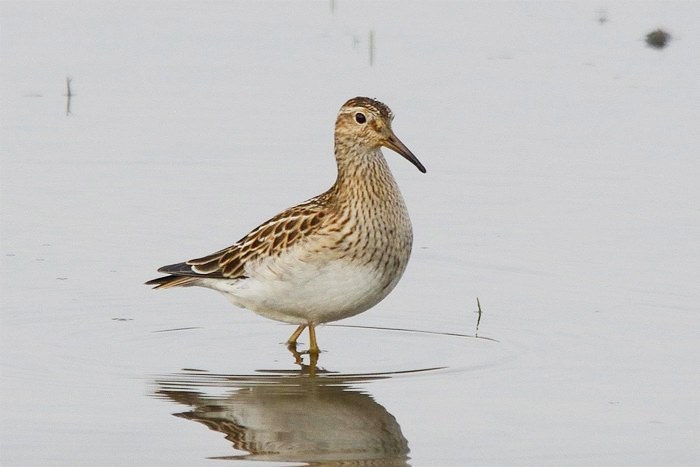
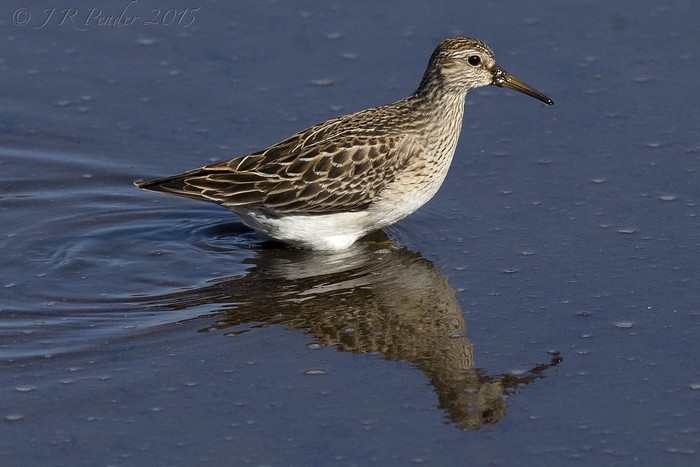
Just the one Red-necked Phalarope this week – off Tory Island (Co.Donegal) on 1st – but a handful of Grey Phalaropes provided further dainty interest: remaining off Dungeness (Kent) until 2nd; off Portishead (Somerset) on September 30th; off Sanday (Orkney) on 1st; from a Scilly pelagic on 3rd with five noted; past Holme Dunes NWT (Norfolk) on 4th; and on Hesketh Out Marsh RSPB (Lancashire) on 5th.
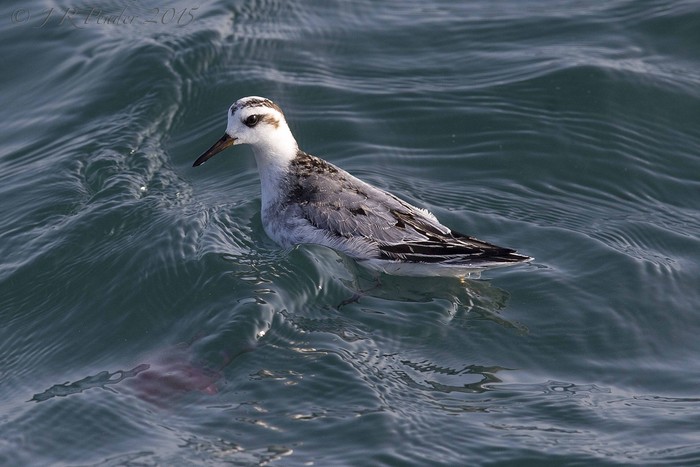
Late Dotterels were at opposite ends of the country – on Lundy (Devon) on 2nd, and at Cullivoe on Yell (Shetland) on 4th-5th.
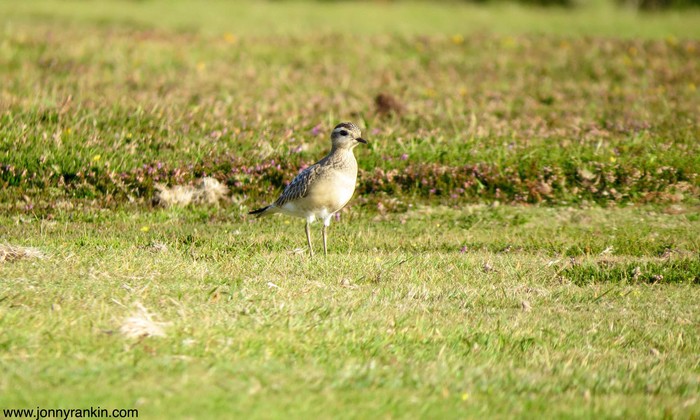
The moulting adult White-winged Black Tern remained on the power station outfall at Heysham (Lancashire) until 1st providing the week’s sole tern interest.
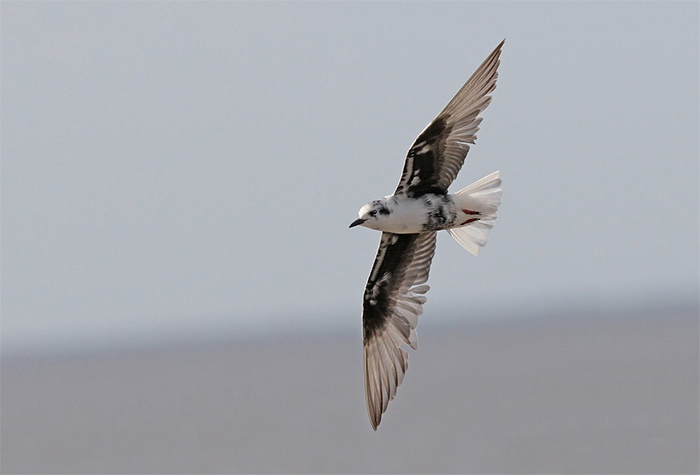
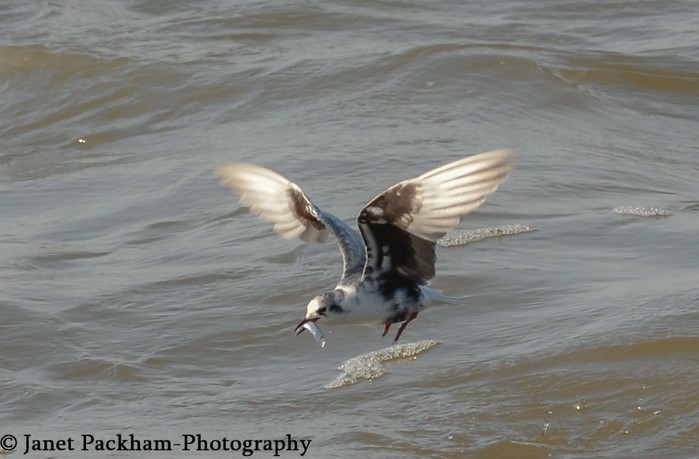
Moray’s second ever Bonaparte’s Gull was found on the Lossie Estuary on 4th-6th. An adult bird, the first and last one was a first-summer on Loch Spynie on 23rd-26th May 2007. The regular wintering adult was again in Devon at Dawlish on 6th.
Numbers of Ring-billed Gulls edged up again a little this week, with five adults recorded, all but one of which were in Ireland: the week’s sole non-Irish adult bird was the regular at Dingwall (Highland) on September 30th still; the remainder were at Portrush (Co.Antrim) still on 1st, at Ballycotton (Co.Cork) on 1st also, and on 2nd at Nimmo’s Pier (Co.Galway) and Rush (Co.Dublin). In England the second-winter was again at Preston Dock (Lancashire) on 6th.
A handful of Glaucous Gulls were noted this week, with one on Sanday (Orkney) on September 30th – October 3rd and two birds there on 1st, and further singletons in Shetland – on Yell at Mid Yell on 4th, at Pool of Virkie and Fair Isle on 5th, and at nearby Scatness on 6th.
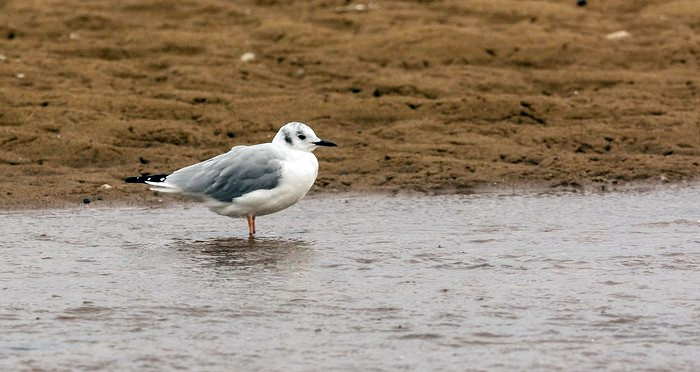
Two second-winter Iceland Gulls were noted in Scotland at Brora (Highland) on September 30th and on Barra (Western Isles) on October 1st. A juvenile shared the Lossie Estuary (Moray) with the adult Bonaparte’s Gull on 5th.
We finish off the gulls with my perennial favourite, Sabine’s Gull - two juveniles were off the Isle of May (Fife) on September 30th; a further juvenile was recorded from Elmley NNR (Kent) on 1st, and an adult was seen east of Staffin Bay (Highland) on 4th.
Well-covered in last week’s Round-Up, the magnificent adult male Northern Harrier remained on Orkney’s North Ronaldsay until 6th. Sitting where I am, and with all the promise Shetland holds, I really shouldn’t be casting envious eyes across the water to our southerly neighbour, but if time allowed... I could be tempted. What a cracking raptor that is.
Speaking of striking, big birds of prey – nobody can deny the glory and the presence that’s an adult white morph Gyr Falcon. One was at Poulnasherry Bay (Co.Clare) on 3rd.
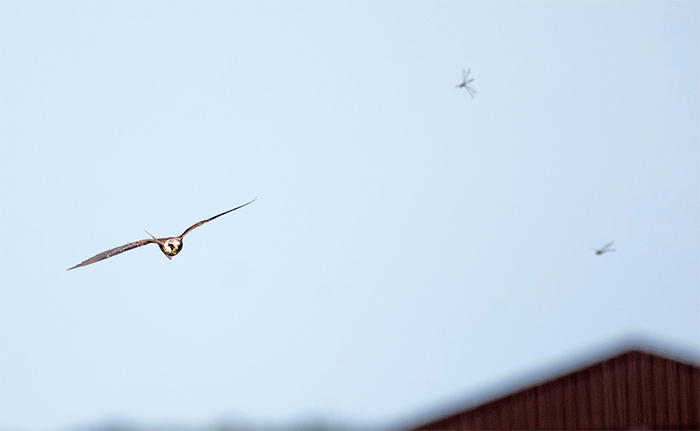
What was presumably the same juvenile Red-footed Falcon as noted at the tail-end of last week was seen once again over Gibraltar Point NNR (Lincolnshire) on September 30th.
An uplift in Honey Buzzards this week saw eight birds recorded: on 1st at Ashford (Kent) and Gibraltar Point (Lincolnshire); on 2nd over Preston Marshes (Kent) and Thornwick Bay (East Yorkshire); and on 4th in Norfolk over Waxham and Weybourne, over Folkestone (Kent) and Sammy’s Point (east Yorkshire).
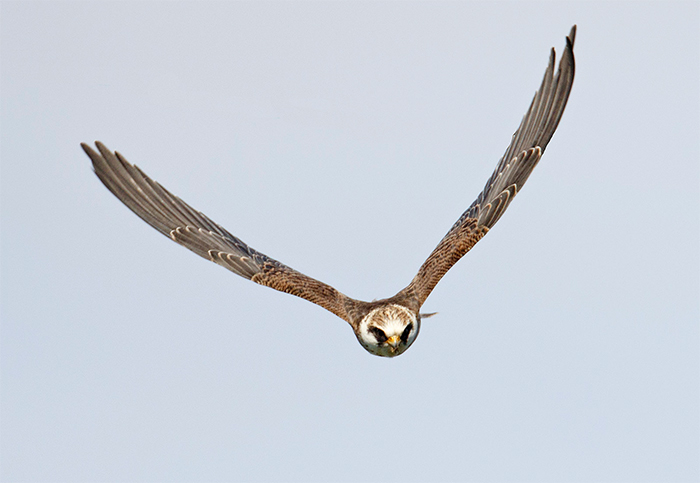
Two Rough-legged Buzzards were reported in recent days – one at Holkham Pines (Norfolk) and an unconfirmed report of one in Northumberland that day also heading west over Rising Sun CP.
A possible Black Kite was seen in the morning of 3rd flying over Otmoor RSPB (Oxfordshire).
Where to begin with the passerines? I think by ignoring the massive, Yellow-browed Warbler-shaped elephant in the room for now. We all need to build up to that...
So, not a bad week at all for passerines, and for those of an easterly persuasion in particular. Let’s get the exception to that rule out of the way early doors – last week’s Red-eyed Vireo remained on St.Agnes (Scilly) until 2nd, and surely isn’t the last word in American vagrants this autumn...
Topping the best-of-the-rest, for a species that’s gone stratospheric in recent years, Orkney could be forgiven for feeling a little short-changed in the Red-flanked Bluetail department. The statistics tell a sorry tale – of the 127 accepted records up to the end of 2013, a mere five have been Orcadian; while Shetland’s enjoyed a whopping 32 of these once near-mythical rarities. Westray set about redressing that balance a little on 5th with one on the cliff-edge at Noup Head – a timely reminder for all visiting birders to the Northern Isles that, in the absence of much vegetation, it’s worth giving some attention to the cliffs as well as the gardens in Orkney and Shetland – there are often migrants resting and foraging in the considerable shelter afforded by cliffs.
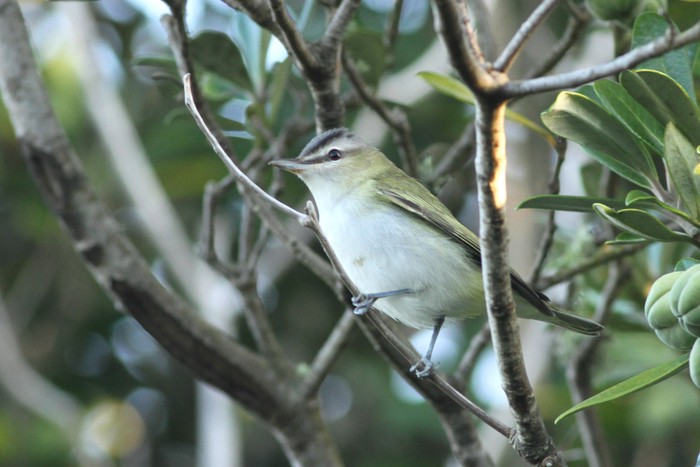
Speaking of, and sticking with, Shetland specialties for a moment, the Pechora Pipit stuck around at Norby until 2nd. The west mainland of Shetland is probably reeling in the aftermath of last week’s Lanceolated Warbler twitch – I heard it variously described as ‘carnage’, ‘a nightmare’, and ‘brilliant’ – so the contrast probably couldn’t have been starker with this week’s Shetland Lancy offering, one enjoyed in blissful isolation on Out Skerries on 5th. The mind boggles at what’ll happen when a Gray’s Grasshopper Warbler turns up in Quendale’s giant iris beds... Another probable Lancy was elusive at Kilnsea (East Yorkshire) on 1st.
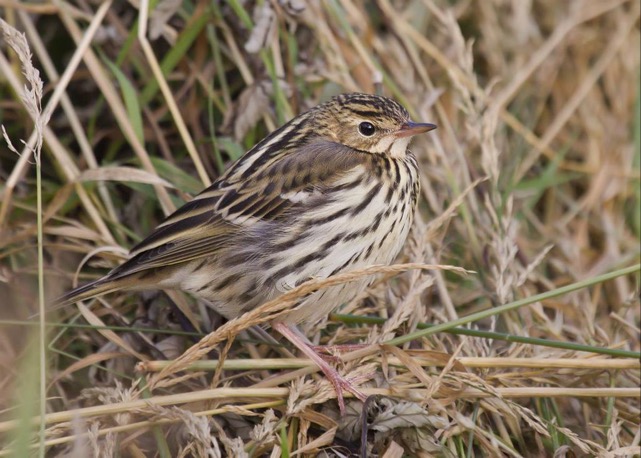
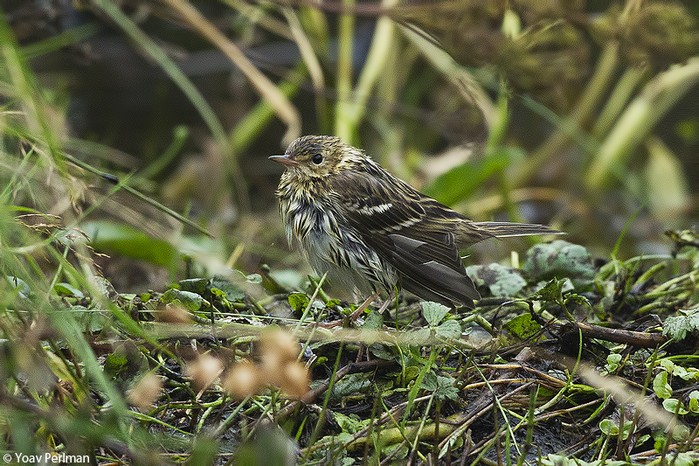
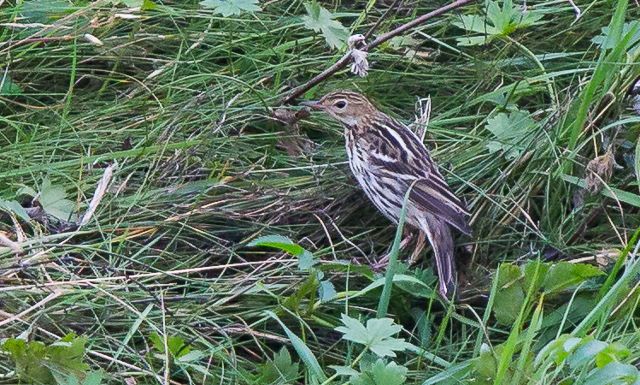
October records of Alpine Swift are somewhat unseasonal but not unprecedented – one was a quality find at Little Orme (Conwy) on 5th-6th. Also generally more of a-spring-rather-than-an-autumn bird were the Hoopoes noted on Portland (Dorset) on 2nd and the Isle of May (Fife) on 6th.
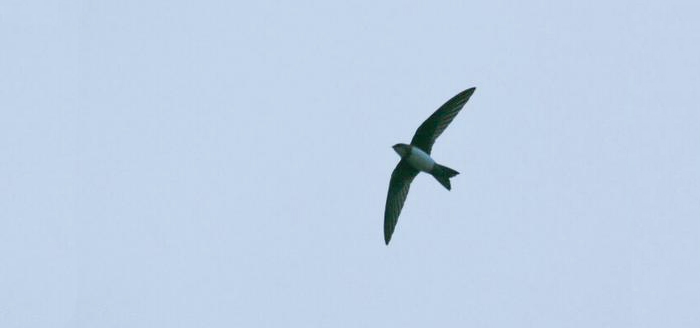
Small numbers of Wrynecks this week, with just a handful to report on: two were on Gugh (Scilly) on September 30th, with one still there on 1st; further singles were at Shannon (Co.Clare) on 30th, Penmaen (Glamorgan) on 2nd, and Inishmore (Co.Galway) on 5th.
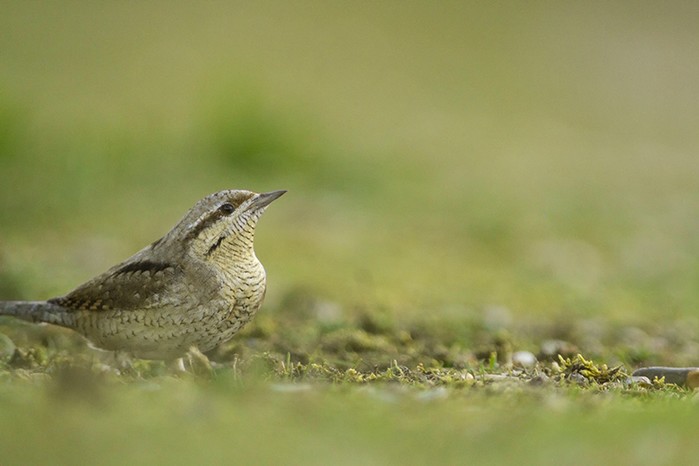
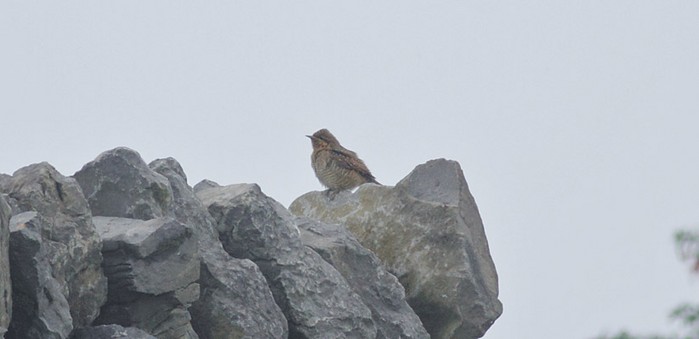
There was an equal paucity of Red-backed Shrikes, with just four reported – lingerers from last week at Burrafirth on Unst (Shetland) until 5th, on Hayling Island (Hampshire) until 4th, and newly arrived on Out Skerries (Shetland) on 5th and at Evie on the Orkney mainland on 6th.
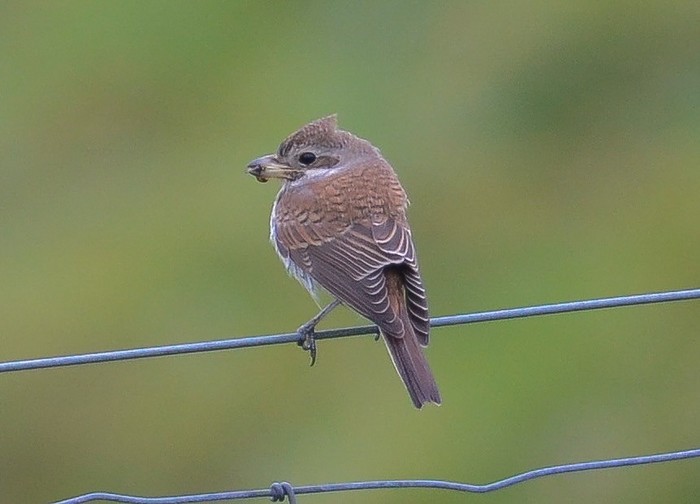
Shrikes of a different kind were very much on the move though, with a Great Grey Shrike at Buckton (East Yorkshire) on 2nd-3rd the vanguard of a small arrival along the east coast on 4th – surprise, surprise, at the same time as a fresh pulse of Yellow-browed Warblers into the country. Arrivals on 4th were at Horsey (until 6th) and Northrepps (Norfolk), Oare Marshes NR (Kent) and at Bedfordshire’s Sandy Smith NR until 6th; with one found at Quendale (Shetland) on 5th.
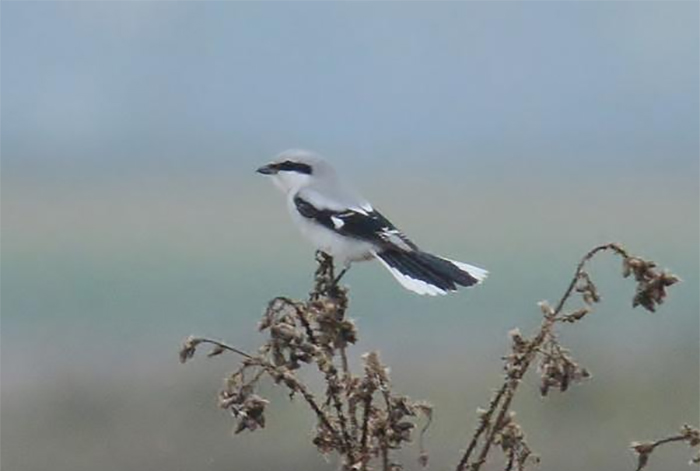
Surely not long now before an Isabelline - or something better still - is unearthed?
We enjoyed good numbers of Red-breasted Flycatcher this week, with over 20 birds recorded: two were at Wester Quarff (Shetland) on September 30th (one remaining until October 2nd), with single birds seen that day in Shetland on Out Skerries and elsewhere on Barra (Western Isles), Spurn (East Yorkshire), and Brownstown Head (Co.Waterford). On October 1st birds were seen in Shetland at Hestingott (until 4th) and Ireland. A further Shetland individual was at Exnaboe on 2nd-3rd, with singles on 2nd at Whitburn (Co.Durham) and down in Cornwall at Land’s End.

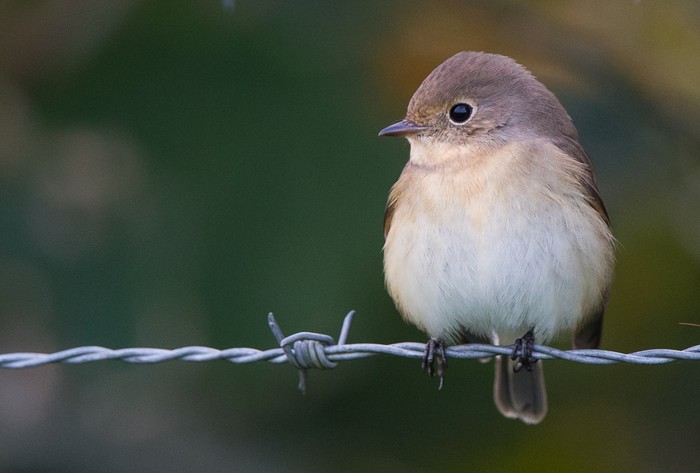
On 3rd we added another to Shetland’s tally at Bigton (there until 4th), with other birds elsewhere on Inner Farne (Northumberland), Skomer (Pembrokeshire) and Old Head of Kinsale (Co.Cork). October 4th provided two more Shetland birds, at Maywick and on Fair Isle (with two there the following day), and one on Westray (Orkney) – both latter birds still present the following day. On 5th another Shetland bird was found at Levenwick, with one at Porthgwarra (Cornwall) and one at Low Newton-by-the-Sea (Northumberland) that day also. On 6th one was on Skokholm (Pembrokeshire).
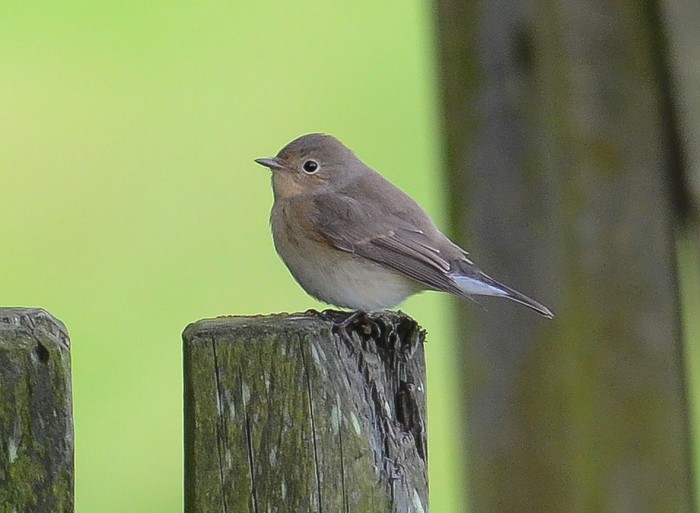
Last week’s showy male Bluethroat at Shetland’s Quendale remained into the new week, remaining there until 6th. One was on Sanday (Orkney) from September 30th – October 3rd. Other final gasps of September arrivals were at Boddam and Out Skerries (both Shetland) on 30th, with the latter still there on 3rd; another was reported from Leighton Moss RSPB (Lancashire) on 30th. Further Shetland singles were at Bixter and Pool of Virkie on 1st, Fair Isle on 4th, and on 6th at Burrafirth on Unst. A further non-Shetland bird was on Loop Head (Co.Clare) on 6th.
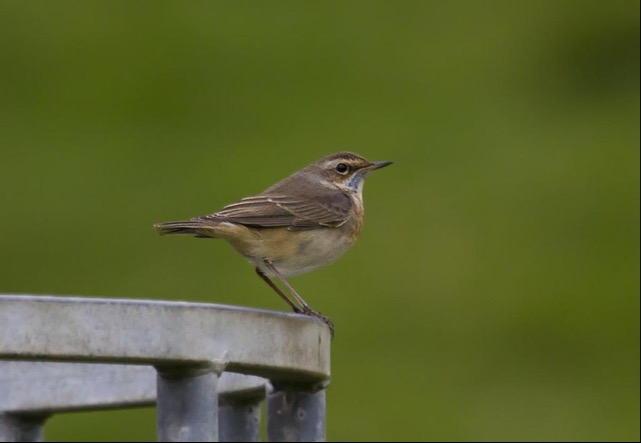
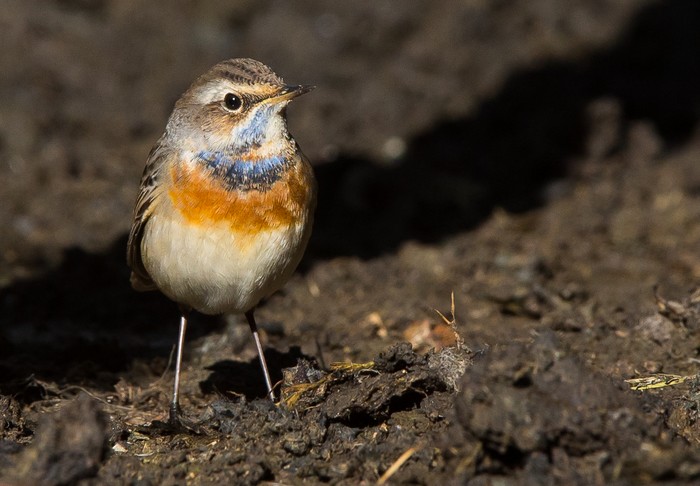
Olive-backed Pipits are always a terrific autumn find, combining subtle good looks with, despite what the BBRC statisticians may say, enough rarity to set the pulse racing. We’ve touched already on the Spurn individual on 3rd, but this was predated by one in Lerwick (Shetland) on 2nd-5th, and followed by further birds at Gibraltar Point (Lincolnshire) on 4th and on 5th in Shetland at Scatness and Fair Isle.
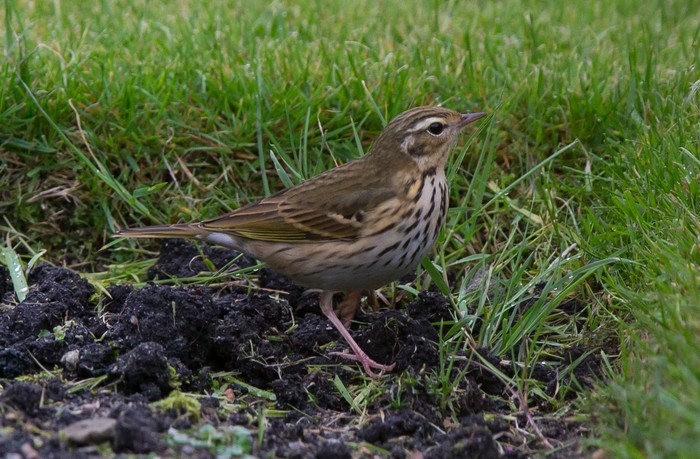
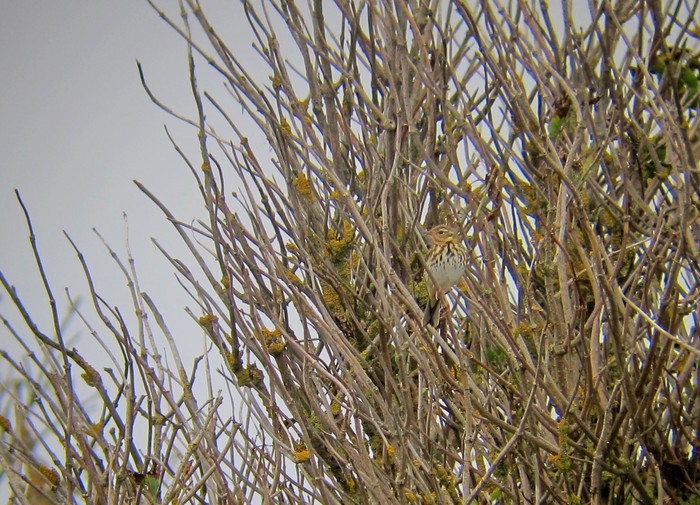

Scatness had already notched up a good pipit by this point with the first of the week’s Red-throated Pipits there on 3rd. Further birds that day were located in Shetland in Lerwick and on Fair Isle, and at Pilning Wetland (Gloucestershire). Scilly’s faithful unearthed one in the airfield area on 4th-5th – bringing back nostalgic memories for me of my first one there in 1991. One finished the week on Isle of May (Fife) on 6th.
But of all the pipits, this week really belonged to Richard’s Pipit - with around 30 individuals seen, how could it possibly not? In chronological order, birds remained on Whalsay (Shetland) and North Ronaldsay (Orkney) until 1st, while on 1st-3rd two were on Tory Island (Co.Donegal), with three there on 4th. On 2nd the arrivals began in earnest – singles at Land’s End (Cornwall) and Great Orme (Conwy), on Shetland at Haroldswick on Unst (until 6th) and Out Skerries (with two there on 5th), and at Hilbre Island (Cheshire) on 2nd-3rd.
A brief hiatus on 3rd saw just the one record, at Donna Nook (Lincolnshire) before the pace of arrivals picked up once more on 4th on England’s east coast: birds found in Norfolk at Beeston Bump and Northrepps, at Lincolnshire’s Gibraltar Point (with two there on 5th-6th), at Long Nab (North Yorkshire) and Newbiggin-by-the-Sea (Northumberland). Matters got a little silly in Shetland on 5th with five birds seen on Fair Isle, a single at Sumburgh, and on Unst new individuals at Hermaness NNR and Lamba Ness; elsewhere that day singles were on Flamborough Head and Spurn (East Yorkshire) and the Isle of May (Fife).
The week closed on 6th with birds seen on Unst (Shetland) at Skaw, in East Yorkshire at Spurn, at Donna Nook again in Lincolnshire, at Cocklawburn Beach (Northumberland) and a further possible individual in Suffolk at Stowupland.
I’d be a liar if I said I wasn’t hoping to add this to my patch list (at least) this coming weekend...
Apart from the Spurn individual, the week’s sole other Citrine Wagtail was an Irish bird, one at Ballycotton (Co.Cork) on 3rd.
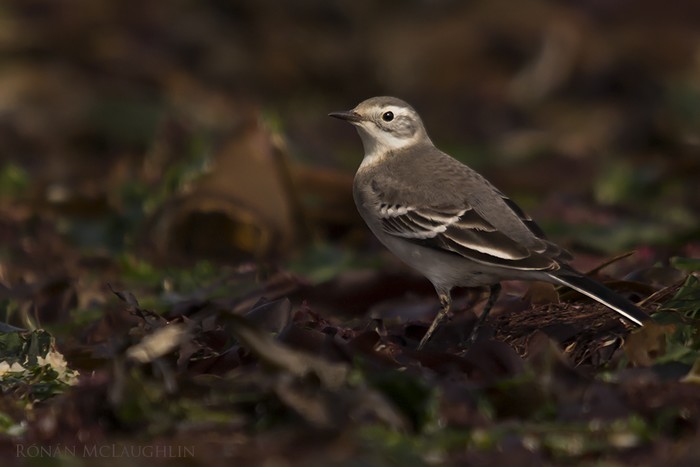
Just the Rose-coloured Starlings to go now, and we’re into the heaven (and the living hell for your numerically challenged reviewer) that’s the week’s assorted warblers. Rosies were once again mooching around West Penwith this week with one or two juveniles seen daily at Land’s End and Porthgwarra. An adult was a little further up-country on The Lizard on 3rd-4th, and a juvenile was in Tewkesbury (Gloucestershire) on 4th-6th.
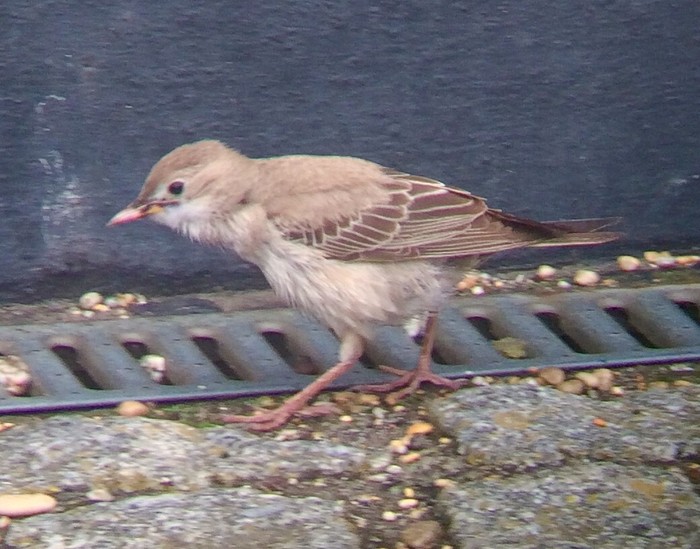
And so, deep breath, we’re into the warblers. And before we get to the Sisyphusian task of making sense of the Yellow-broweds there was plenty of other warbler goodness to report on this week.
Returning briefly to The Lizard in Cornwall, an Aquatic Warbler topped the bill on 3rd. Once upon a time this species was synonymous with this county (particularly in August at Marazion), but times have changed lately and it’s become somewhat scarcer – where once it was annual at Marazion, the last one confirmed there was back in 2012; and indeed, the last Cornish record was one trapped and ringed in the private ringing site of Nanjizal Valley in September 2013.
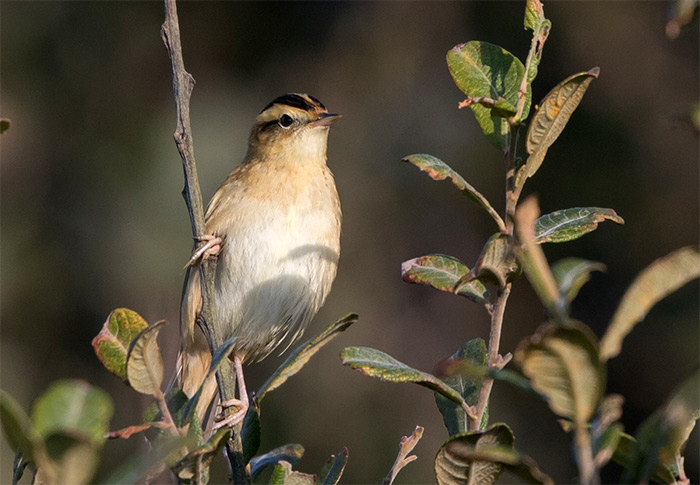
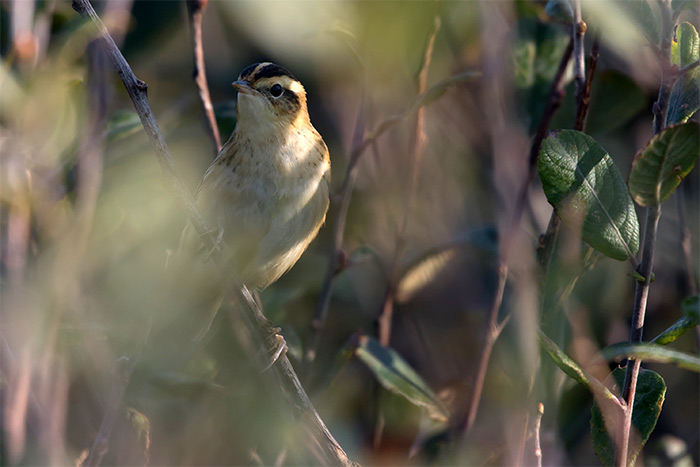
Heralding the probable opening of some modest floodgates for both species in the next fortnight, a Dusky Warbler was in the Secret Garden at Grutness (Shetland) on 5th and a Radde’s Warbler was in Ireland at Inishbofin (Co.Galway) on 6th.
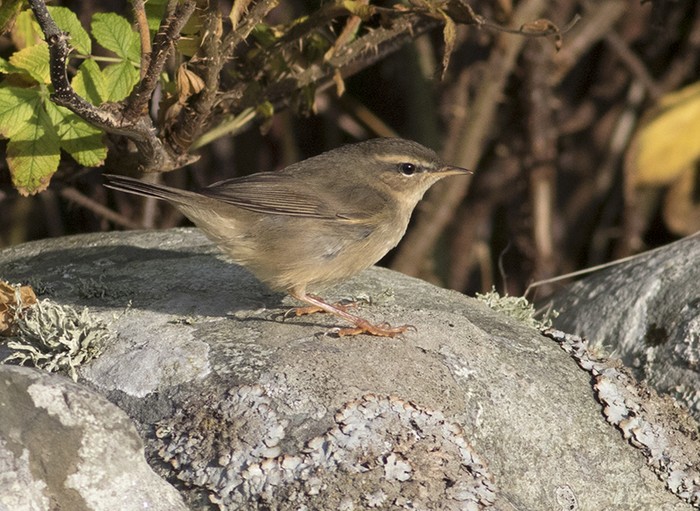
Predictably, there’s something of a theme developing here as we stay in Shetland for further warbler news – one of the week’s two Arctic Warblers remained at Weisdale from September 30th – October 2nd, while at Kilnsea (East Yorkshire) one was trapped and ringed on 4th.
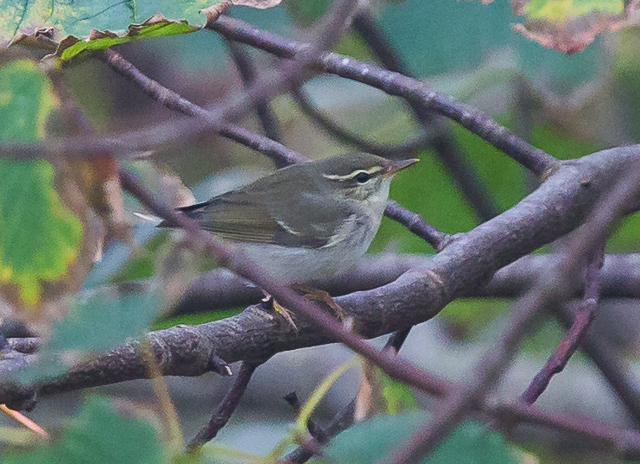
The secretive Eastern Subalpine Warbler continued to skulk, hide and generally be difficult to see in Shetland at Mossbank until 4th at least. Another remained at Flamborough (East Yorkshire) until 1st.
Shetland’s excellent run of Blyth’s Reed Warblers this autumn is a matter of record now – birds were available at Quendale, Scousburgh, Toab and Hestingott on September 30th, with the Toab bird still present until 4th and the Hestingott bird until 2nd respectively. Breaking this near monopoly was Garinish Point in Co.Cork where one was present on 5th-6th.
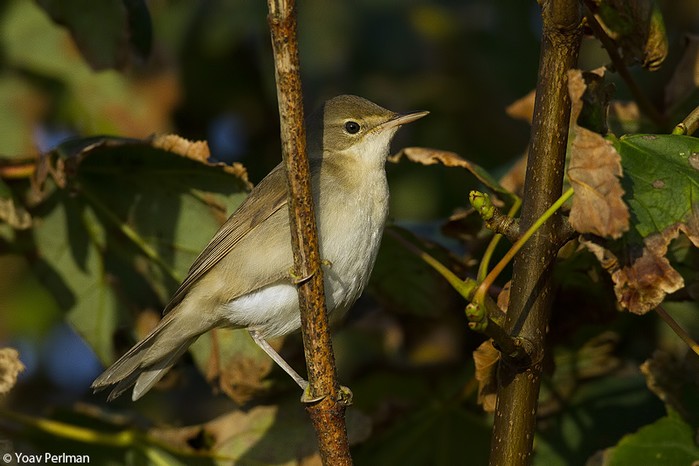
The first of the autumn’s Pallas’s Warblers trickled in this week on 4th, with individuals found at Fingringhoe (Essex) and Bolt Head (Devon). Plenty more of these please!
[Editor’s note – you say that now... You’ll change your tune when they do a Yellow-browed Warbler in the coming weeks.]
Just a little more putting off of the big moment – mopping up the warbler odds’n’sods, we’ve got a Marsh Warbler at Fleetwood (Lancashire) on 2nd, a late Melodious Warbler at Inishmore (Co.Galway) on 5th, and a batch of possible Siberian Lesser Whitethroats - some of which may be more pin-downable than others...
We’ll start with the latter – two possible form blythi were trapped and ringed on 3rd at Hollesley Marshes RSPB (Suffolk) – I am assuming in this brave new world in which we live these will have shed a feather or two in the bird-bag and will be able to be definitively assigned to race with some DNA magic in the near future. Other possible contenders that weren’t trapped and ringed this week were at Gulberwick (Shetland) on 1st, Lerwick (Shetland again) on 4th, and on 5th at Spurn (East Yorkshire) and Levenwick (yep, Shetland once more).
More taxonomic fun was to be had on 6th at Gibraltar Point (Lincolnshire) where a possible form halimodendri Desert Lesser Whitethroat was trapped and ringed. Usual drill – we await the DNA. Martin Collinson and his team will be busy again shortly no doubt!
One final big chunky paragraph about, fittingly, a big chunky warbler before we get all inornatus on you – it’s your weekly dose of autumnal Barred Warblers: September closed on 30th with individuals in Shetland at Dale of Walls, Hestingott, Levenwick, Loch of Spiggie, Vatsetter, Out Skerries and Fair Isle – the latter site hosting three birds that day. Elsewhere on 30th birds were at Firkeel (Co.Cork) – this bird remaining there all week thereafter - Marsden Quarry (Co.Durham), North Ronalsday (Orkney) and in East Yorkshire at Sammy’s Point and Spurn. October 1st added four more birds, one apiece for Fetlar (Shetland) until 2nd, Barra (Western Isles), Ballynacarriga (Co.Cork) and Whitley Bay (Northumberland). On 2nd birds were noted at Flamborough Head (East Yorkshire) until 5th, St.Mary’s Island (Northumberland) until 6th, and on Shetland at Exnaboe and Melby. Another bird was in Shetland at Easter Quarff on 3rd, with individuals also seen that day on Harris (Western Isles) and Newport Wetlands (Gwent). Shetland took 4th by the scruff of the neck with two in Scalloway and singles at Channerwick, Gutcher on Yell, Lerwick, and Uyeasound on Unst; with one in the Western Isles on Lewis. There was a certain inevitability to one more being found in Shetland on Bressay on 5th; one was on Barra (Western Isles) on 6th.
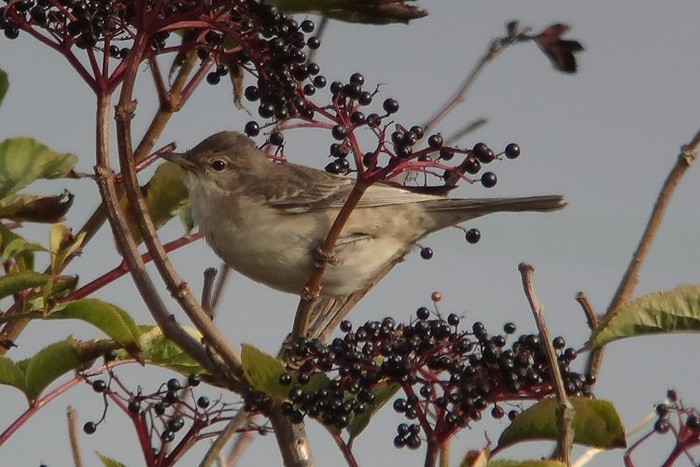
And so to the much-hyped Yellow-browed Warblers - there were loads of them!
Moving onto the finches, there was a Serin at Exmouth (Devon) on 4th, and perhaps surprisingly light showing of Common Rosefinches this week -
- what’s that? You want to hear about the Yellow-broweds? Oh go on then... here you go:
Was there ever a week quite like this? A fortnight, even? I’ve already exhausted my stock of superlatives for it – there were simply Yellow-browed Warblers everywhere this week – the east coast was bowed down with them, they hit the west coast of England, got out onto Scilly, popped up in Ireland – and here and there, they were found inland in middle England. Shetland was simply crazy – with over 220 individuals reported on September 30th, numbers fell away to a low of 35 on October 3rd before kicking off again on 4th and rising back to 95 on 5th. Using Shetland as a case study, we can see we’re right into the realms of making an informed estimate (or guess, as I believe it’s technically know) at how many birds were involved here alone. Those Shetland totals don’t include the countless birds that will have been in unvisited gardens across the isles, tucked away in sheltered geos, in ruined crofthouses, working their way along lichen-clad walls. More will have been missed than were found, surely. Whalsay’s totals, for example, don’t include the three I found dead this week at the jaws of the local cats.

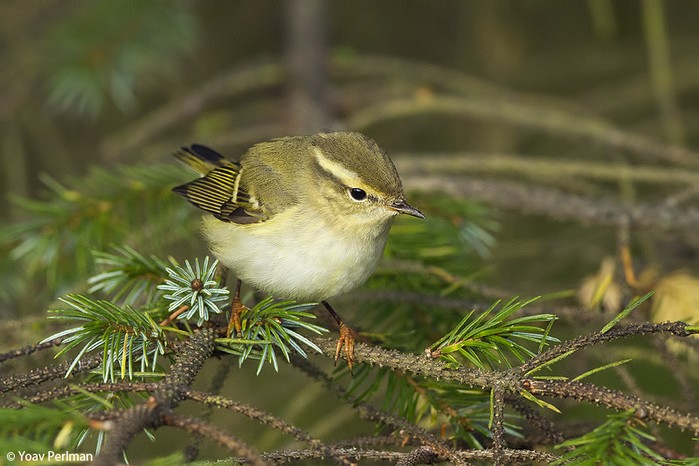
Taking Britain and Ireland as a whole, my conservative totting up of this week’s reported birds brings me to over 900 individuals. The mind boggles how many went unseen and unheard in eastern coastal town and village gardens, in farmland hedges and copses. That so many pressed west, that birds were found deep inland in Cambridgeshire, in London, in multiple numbers in Ireland... all of this suggests we’re talking about a total influx of many thousands of birds. And not just one influx – there was a distinct pulse in numbers on 4th with a fresh wave of birds hitting the east coast. And still they came...
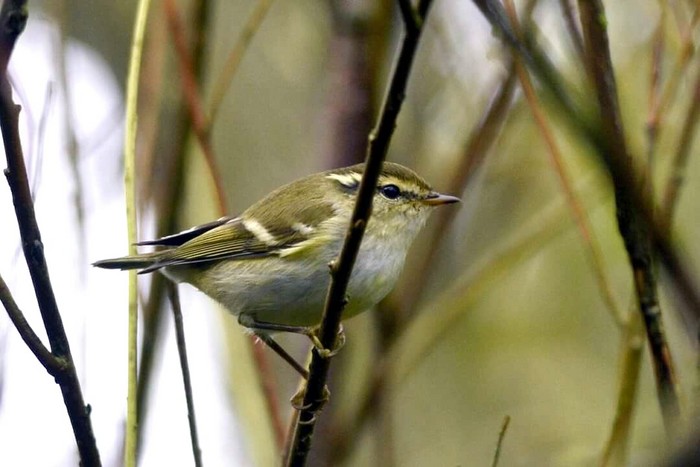
If ever there was a time to add Yellow-browed Warbler to your patch list, I’d suggest this weekend was it.
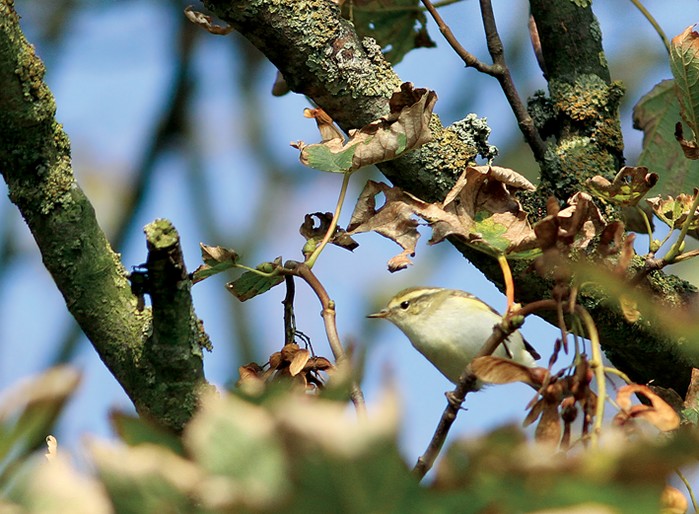
Okay, moving back to those Common Rosefinches, as I was saying, a surprising paucity of records – singles were reported from Out Skerries (Shetland) on September 30th and October 5th, with further Shetland individuals at Easter Skeld on 1st and up on Unst in the Baltasound area on 5th.
We enjoyed a better showing of Little Buntings, with lingering birds in Shetland on Whalsay at Brough on September 30th and on out Skerries until October 2nd starting the week off. One was on Fair Isle (Shetland) on 1st and 4th. One lingered at Spurn (East Yorkshire) on 1st-2nd, with one trapped and ringed there on 4th. Lincolnshire’s Saltfleetby NNR landed one on 2nd, while on 3rd one was on Blakeney Point (Norfolk). On 4th one was in Shetland on Unst at Hagdale, while another bird had made it much further west indeed – being found on Hengistbury Head (Dorset). On 5th-6th one was on the Farnes on Brownsman (Northumberland). On 6th one appeared briefly at Happisburgh (Norfolk), with a further individual at Scarborough (North Yorkshire) that day.
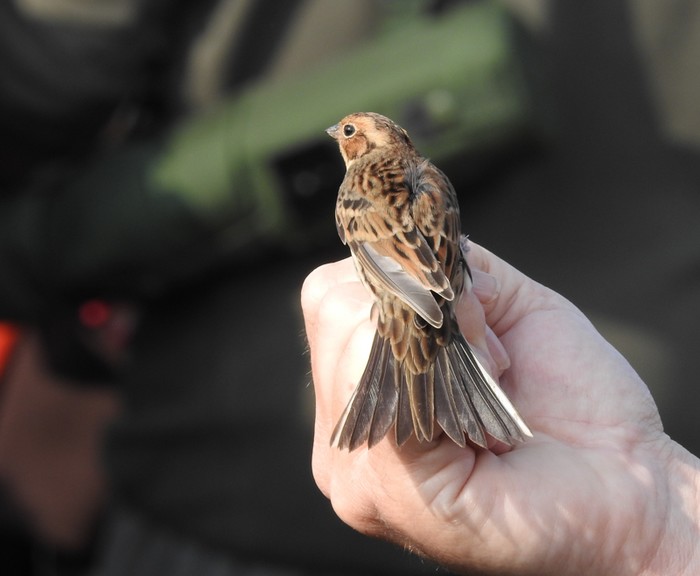
Always a rarer proposition than their diminutive counterparts, the week provided three Rustic Buntings - on Lundy (Devon) until 1st, and on 5th widely separated at Baltasound on Unst (Shetland) and Cape Clear (Co.Cork).
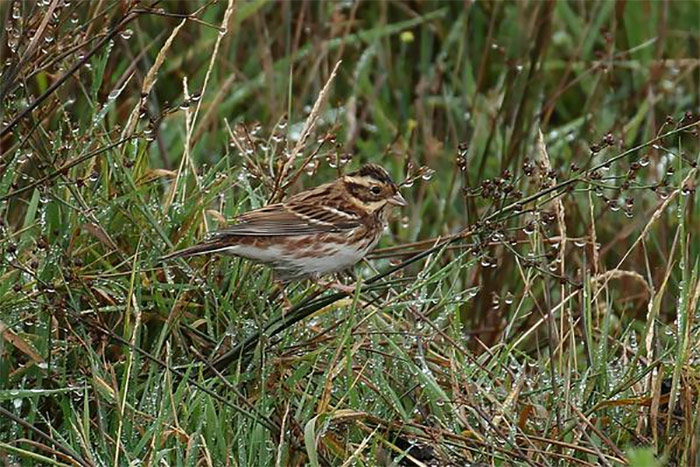
Two Ortolan Buntings wrap things up for another week – these were at Marsden Quarry (Co.Durham) on 1st and Out Skerries (Shetland) on 2nd.
And that was your week’s birds. Frighteningly good, really – but I have a gut-feeling that the coming week could blow what’s just gone clean out of the water. Hurricane Joaquin may or may not deliver something tasty from the west, but the week to come appears book-ended with good-looking easterlies.
In the week that holds statistically the most productive day of the entire year where rare birds are concerned* it looks this year like almost anything could be on the cards. There’s little point then trying to predict a particular species (though that’s a fun game for all that), so instead let’s take a look at some of the bestest bits of past years for a flavour of what we’re talking about:
7th October - Wood Thrush, St.Agnes (Scilly), 1987; Blackburnian Warbler, Fair Isle (Shetland), 1988; Eye-browed Thrush, St.Mary’s (Scilly), 1993.
8th October - Black-and-white Warbler, Prawle (Devon), 1987; Northern Parula, St.Mary’s (Scilly), 1992; Canada Warbler, Loop Head (Co.Clare), 2006.
9th October - Siberian Rubythroat, Fair Isle (Shetland), 1975; Common Yellowthroat, Foula (Shetland), 2004; Alder Flycatcher, Nanjizal Valley (Cornwall), 2008.
10th October - Cliff Swallow, St.Agnes & St.Mary’s (Scilly), 1983; Veery, Lundy (Devon), 1987; Hermit Thrush, South Uist (Western Isles), 2010.
11th October - Common Nighthawk, Moreton (Cheshire), 1985; Wilson’s Snipe, St.Agnes (Scilly), 2008; Brown Shrike, Staines Moor (Surrey), 2009.
12th October - Yellow-browed Bunting, Fair Isle (Shetland), 1980; Philadelphia Vireo, Galley Head (Co.Cork), 1985; Taiga Flycatcher, Sandgarth (Shetland), 2003.
13th October - Tengmalm’s Owl, Finstown (Orkney), 1980; Grey-tailed Tattler, Dyfi Estuary (Ceredigion), 1981; Red-breasted Nuthatch, Holkham Pines (Norfolk), 1989.**

You get the picture. The coming week has an epic reputation. While most have us will have seen some of the above highlights, there’s bound to be something on there that tickles your fancy. So let’s hope the 2015 vintage is as good as some of the past iterations...
Jon Dunn
07 Oct 2015
* It’s October 10th, as you ask. Which comes to be a Saturday this year – so make your excuses to your nearest and dearest, and get out there. You’ve gotta be in it to win it...
** 13th October can’t go by without mention of American Redstarts - of the seven British and Irish records a mighty three have been found on this date – on Cape Clear (Co.Cork) in 1968, at St.Just (Cornwall) in 1983 and the very last one of all in 1985 on Galley Head (Co.Cork) – an interminable thirty years ago. When oh when will this blocker fall...
Please note: we put a lot of time and effort into sourcing and and producing the images, videos and graphics for each roundup. Some of you (probably Apple users) may notice some photos etc. that appear to have incorrect captions. Please try refreshing the page as they are correcty captioned. If after a refresh they are still showing the incorrect captions then please email us
















